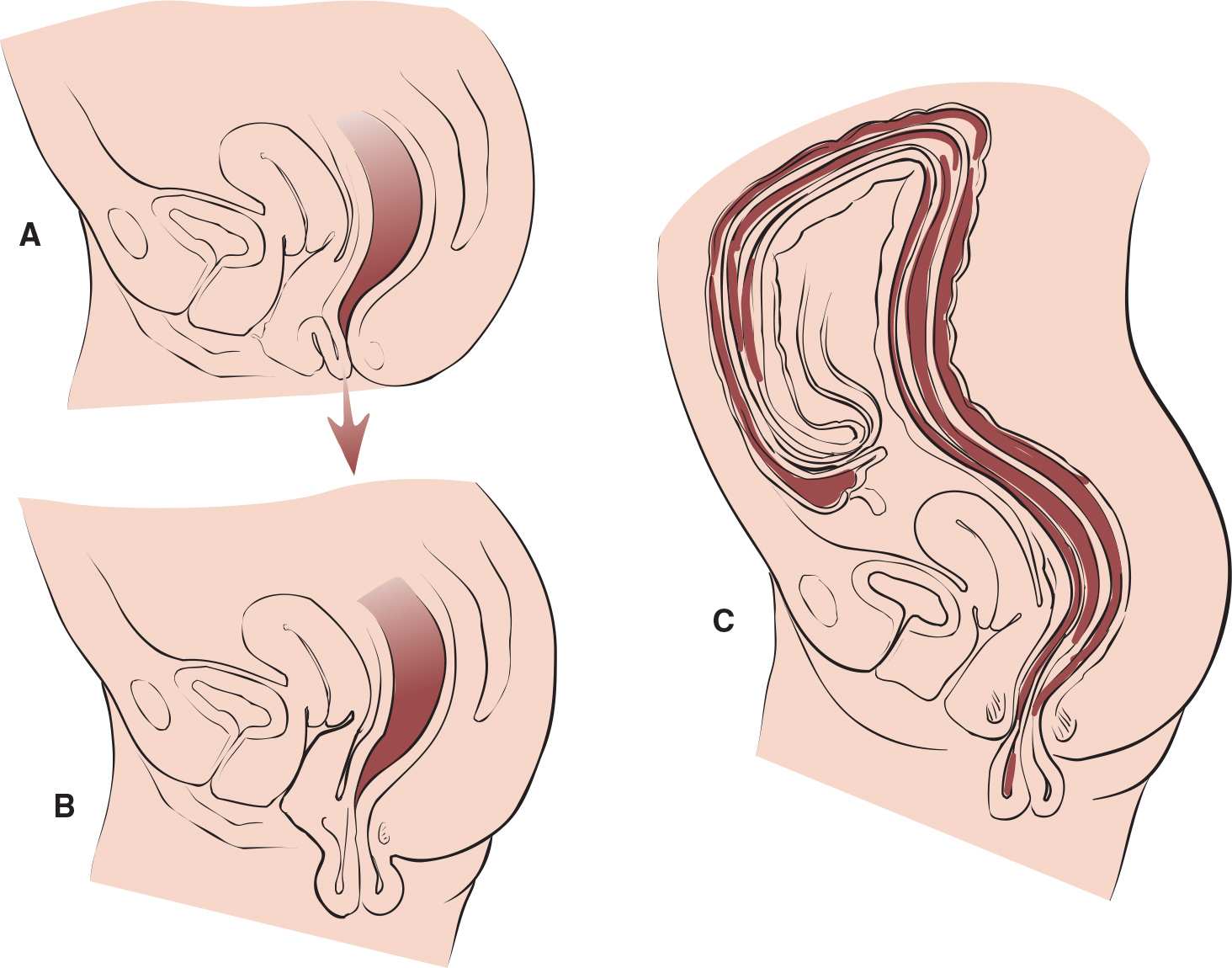A rectal prolapse is when one or all layers of the rectal mucosa protrude out through the anal opening (FIGURE 32.1).
![]() Complete prolapse occurs when all layers of the rectum protrude through the anal opening
Complete prolapse occurs when all layers of the rectum protrude through the anal opening
![]() Incomplete prolapse refers to an internal prolapse that does not project through the anal opening and does not need an emergent reduction
Incomplete prolapse refers to an internal prolapse that does not project through the anal opening and does not need an emergent reduction
![]() Mucosal prolapse is the protrusion of only the rectal mucosa externally
Mucosal prolapse is the protrusion of only the rectal mucosa externally
CONTRAINDICATIONS
The following conditions require an emergent surgical consultation:
![]() Irreducible complete prolapse
Irreducible complete prolapse
![]() Strangulation or gangrene of the rectal tissue
Strangulation or gangrene of the rectal tissue
![]() Perforation or rupture of the rectal tissue
Perforation or rupture of the rectal tissue
![]() Anal incontinence
Anal incontinence

FIGURE 32.1 Anatomy of a rectal prolapse. A: Partial prolapse. B: Complete prolapse. C: Prolapsed intussusception. (From Schwartz G. Reducing a rectal prolapse. In: Henretig FM, King C, eds. Textbook of Pediatric Emergency Procedures. Philadelphia, PA: Williams & Wilkins; 1997:948, with permission.)
LANDMARKS
![]() A thick muscle layer palpable between the thumb and forefinger suggests a complete prolapse. This will present with the folds in a concentric ring pattern.
A thick muscle layer palpable between the thumb and forefinger suggests a complete prolapse. This will present with the folds in a concentric ring pattern.
![]() In a mucosal prolapse, the mucosal folds originate from the central lumen of the protrusion and extend outward in a radial manner
In a mucosal prolapse, the mucosal folds originate from the central lumen of the protrusion and extend outward in a radial manner
![]() Mucosal prolapses tend to extend not beyond 4 cm from the anus, whereas complete prolapses may extend up to 15 cm from the anal verge
Mucosal prolapses tend to extend not beyond 4 cm from the anus, whereas complete prolapses may extend up to 15 cm from the anal verge
![]() General Basic Steps
General Basic Steps
![]() Patient preparation
Patient preparation
![]() Prolapse reduction
Prolapse reduction
![]() Postreduction care
Postreduction care
Stay updated, free articles. Join our Telegram channel

Full access? Get Clinical Tree


